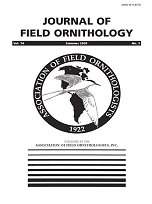Stopover areas are vital for the successful migration of many species of shorebirds, as they, in part, allow individuals to deposit large quantities of fat needed to fuel their northward and southward journeys. While much research has focused on bird migration, few studies closely examine the environmental characteristics of specific stopover areas. For our study, we conducted prey availability surveys and documented shorebird habitat use during northward summer migration for three historically important stopover areas along the Connecticut Long Island Sound coastline in 2000. Coastal Connecticut provides important habitat not only for shorebirds migrating from northern Canada to South America, but also for resident breeding shorebirds (e.g., oystercatchers, plovers, and sandpipers). Our prey availability surveys indicate that all three stopover sites were characterized by some combination of polychaete worms, crustaceans, and mollusks. Polychaete worms of the family Neredidae were the most common prey item at two of the three sites. In addition, the site frequented by the greatest densities of shorebirds also had the greatest density of nereid worms and the greatest diversity of invertebrates. In terms of habitat use, our results indicate that foraging densities tended to be highest on intertidal habitats that were sheltered from coastal wave action and where densities of benthic (burrowing) and epifaunal (surface-dwelling) prey tended to be high. However, some shorebird species, including one breeding resident, the American Oystercatcher (Haematopus palliatus) and one migrant, the Ruddy Turnstone (Arenaria interpres), both of special management concern, favored foraging on beach-front habitats. In contrast to foraging habitat preferences, shorebirds roosting at high tidal phases showed strong preferences for beach habitats fronting the Long Island Sound. The use of beach-front habitats for both foraging and roosting poses a challenging situation for beach managers.
How to translate text using browser tools
1 July 2004
Prey abundance and habitat use by migratory shorebirds at coastal stopover sites in Connecticut
J. S. Placyk,
B. A. Harrington
ACCESS THE FULL ARTICLE
It is not available for individual sale.
This article is only available to subscribers.
It is not available for individual sale.
It is not available for individual sale.

Journal of Field Ornithology
Vol. 75 • No. 3
July 2004
Vol. 75 • No. 3
July 2004
Connecticut
foraging behavior
habitat selection
resource availability
Shorebirds
stopover areas
waders




